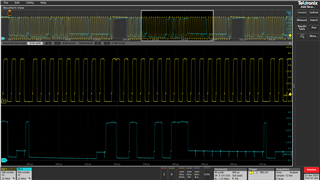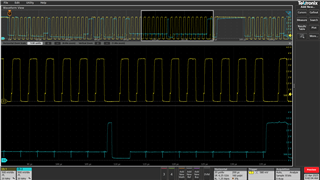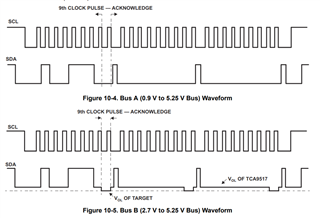Other Parts Discussed in Thread: ISO1640, TCA9517, TCA9800,
Tool/software:
Hi All,
I am using the TCA9517ADGKR as a I2C repeater. This is needed because I am communicating with a I2C device that's not on the same board as the MCU.
Original Setup:
- VCCA and VCCB are 3.3V , the A-side is connected to the MCU with 1K pull-ups;
- The B-side is connected to the ISO1640 with 1k pull-ups;
The problem is the typical value of VOL on the B-side of the TCA9517 is 0.52V and the maximum VIL of the ISO1640 is 0.480V. This doesn't work because the voltage doesn't get low enough for the ISO1640.
A solution was to swap what's connected to the A and B sides, because the A-side can go as low as 0.2V.
Current setup:
-VCCA and VCCB are 3.3V , the A-side is now connected to the ISO1640 with 1K pull-ups;
-The B-side is now connected to the MCU.
The new problem: After swapping the 2 sides, I am now seeing these "hitches" appear in the clock signal and the SDA have this "step" characteristic in the signal. Is this a byproduct of switching the sides? Why does this occur? 




